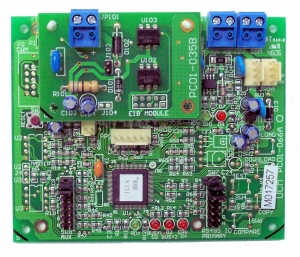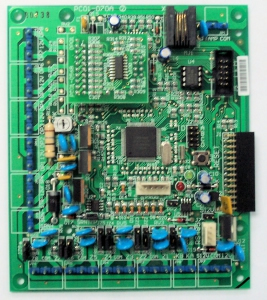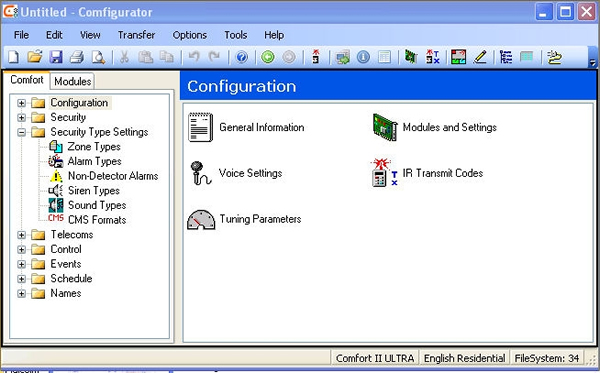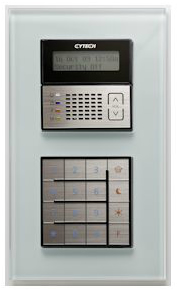 By Andy Ellis, Household Automation Ltd.
By Andy Ellis, Household Automation Ltd.
Having been involved with KNX now for a number of years, I know that no one manufacturer offers the ideal solution to any design. In fact to the seasoned KNX integrator, I suggest that a typical installation would consist of KNX devices from a number of manufacturers. I say this because of the following reasons:
• Wall switches and surrounds – some manufacturers’ offerings are quite frankly aesthetically appalling, while others are cutting edge.
• Relay/dimmer modules – some manufacturers have a base module that allows additional mixed (relay, dimmer, heating, blind) modules to be plugged in. This means that the extensions are more cost-effective as they do not contain the KNX chip.
• Logic or server block – once you have gone down this route, the time and money invested means that you tend to stick with the same unit.
• U/F heating actuator – if you have looked into it, there is really not much choice here, especially if you go for the one with the pump module attachment (although I see that a few manufacturers are now badging the device)!
• Temperature sensors – there are very few manufacturers of simple cost-effective temperature sensors. There are plenty within items such as room controllers, but few as stand alone products.
I could carry on, and on!
Integrating heating with security
One of the more complicated design and programming exercises with KNX usually involves heating control. A solution that we have been implementing now for a number of years is to integrate the KNX heating with the security. The modes of operation overlap exactly, so you can end up with:
Security off (home mode) – corresponds to heating set point.
Away mode – corresponds to heating set point – say 8 degrees Celsius.
Night mode – corresponds to heating set point – say 5 degrees Celsius.
Holiday mode – corresponds to frost protect where 7 degrees Celsius and below activates heating.
Cytech Comfort – the pros
The product that enables this integration with the most ease is the Cytech Comfort alarm. The product in its most basic form is a fully-compliant security alarm. However, it has a number of very useful universal communication modules (UCMs). The KNX UCM simply sits on the KNX bus and allows Comfort to communicate with KNX to send telegrams to any group address as well as receive status and commands from the KNX bus. It connects to the KNX bus wire and requires no PC or RS232 interface.


• Comfort to send telegrams (commands) to any KNX device.
• Any KNX group address to control Comfort.
• KNX touchscreen to act as a security keypad for Comfort.
• Alarm sensors for doors, windows, motion sensors and smoke detectors can to be shown on KNX touchscreens.
• Logic control of KNX.
• Schedule or time programs to control KNX.
• Comfort iPhone app to control KNX.


Cytech Comfort – the cons
The Cytech Comfigurator software is free issue, and like any new product, may take some time to find your way around. That said, it is reasonably intuitive. The real problem, once you have used Cytech, is in deciding whether to use the product as the Logic platform. It will offer you cost-effective flexibility and ease of programming, but at the expense of being reliant on ‘another’ system for your logic.
Although there are very few alarm companies that install the Cytech product, it has so many built-in features such as a telephone dial out and direct connection to monitoring stations (you do not need a separate STU unit), that it is easy to manually program-in telephone numbers and thus get a local key-holding company to take it over.
Conclusion
Home automation has a number of significant features that revolve around when the home is occupied and when it is not, i.e. if the security system is set or unset. Any investment has to add value to your installation and provide the basis for service and maintenance contracts, but while many installers will not take on the security aspect of home automation, my advice is to give a product such as the Cytech Comfort a try. The alarm is comprehensive, and interfacing to the KNX bus is easy. In addition, Cytech provides very good technical support and back up.
The Comfort KNX combination works well for us in all residential applications. Because of the prices of the Logic Engine, we have used Cytech to provide the brains behind home automation projects. Cytech’s unrivalled flexibility in interfacing with other devices means that in many installations where alternative equipment has already been installed, we are able to offer interfacing options. The only thing I suggest Cytech improves is to shout louder about Comfort’s ability to interrogate the KNX bus as this is a distinct benefit and one that is not promoted to its full potential.
Andy Ellis is Managing Director of Household Automation Ltd. Household Automation Ltd is dedicated to providing automation design, installation and maintenance to the residential market.
www.household-automation.co.uk
For more information on Cytech KNX products visit www.cytech.biz.














